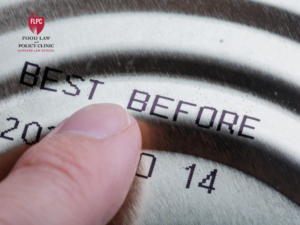This article was written by Robin D. Schatz, and was originally published by Forbes on May 19, 2020.
Jam made with bacon scraps; fish jerky that turns unwanted fish into something delicious; granola bars and snack puffs crafted from spent brewing grams.
These are just a few examples of how entrepreneurial ingenuity is transforming food byproducts and scraps into novel and often very nutritious products for human consumption, creating new sources of protein, other nutrients and fiber in the process—and keeping it all out of landfills.
“Upcycling,” the new term of art, is one way to reduce reduce food waste and help the environment. But until now, there hasn’t been a single standard definition of upcycling, even as the number of startups tackling food waste grows and consumers show more interest in buying products made with upcycled ingredients.
Today, May 19, a task force comprised of food industry players, academic researchers an1d nonprofits is unveiling the first formal definition of the term upcycling. The group says the adoption of a single term and definition by the industry will lead to a powerful new product category that will encourage both the food industry and consumers to embrace products with upcycled ingredients. A 2019 report from Future Market Insights estimated the current value of the upcycled food industry at more than $46 million and projected a 5 percent compounded annual growth rate.
Food waste and loss cost the global economy more than $940 billion a year, according to a study by the United Nation’s Food and Agriculture Organization. Proponents of upcycling say the practice could help reduce the more than 70 billion tons of greenhouse gases generated by food loss and waste, while creating new jobs and innovative products.
The Upcycled Food Association, a Denver-based nonprofit with about 70 member companies, formed just six months ago. Its members, mostly in the U.S., produce some 400 upcycled food products. Realizing a need for clarity, the group immediately established a task force to define upcycled food. Participants included researchers from Harvard University and Drexel University, along with representatives of nonprofits such as ReFed, which aims to reduce food waste, the World Wildlife Fund and NRDC (Natural Resources Defense Council).
Here’s the definition the task force came up with: “Upcycled foods use ingredients that otherwise would not have gone to human consumption, are procured and produced using verifiable supply chains, and have a positive impact on the environment.“

Upcycled food provides protein, fiber and nutrients that might otherwise have gone to waste.
UPCYCLED FOOD ASSOCIATION
Upcycled ingredients must add value to a product and help to reduce food waste. Hot dogs and baby carrots don’t count, Turner Wyatt, CEO of the Upcycled Food Association, told me. The group doesn’t want to see big food companies engage in “greenwashing” by rebranding products that won’t mitigate the food waste problem and have been around for years.
“The main goal is to get them to adopt upcycled food ingredients into their food products, putting it all to use and making sure it goes to feed people,” Wyatt added. “We want upcycled to be a word with integrity in the food system.”

Upcycled Food Association’s infographic accompanies the May 19 release of the first formal industry … [+]
UPCYCLED FOOD ASSOCIATION
Upcycling is clearly gaining momentum. In 2019, Future Market Insights estimated the upcycled food industry was worth more than $46 billion, with a predicted 5% compound annual growth rate. A study from the food product consultancy Mattson said that more than half of consumers want to buy more upcycled foods. And a 2017 study from Drexel University found that consumers view upcycled food as having similar environmental benefits to organics.
“Upcycled food needs a clear definition in order to be meaningful and relevant,” Jonathon Deutsch, co-author of the 2017 Drexel study and a member of the task force, said in a statement.

Environmental benefits of upcycled food
UPCYCLED FOOD ASSOCIATION
Another task force member, Emily Broad Leib, clinical professor of law, director of the Harvard Law School Food Law and Policy Clinic, and deputy director of the Harvard Law School Center for Health Law and Policy Innovation, said in a statement that scaling up the use of upcycled foods would help make the food supply chain more efficient and resilient. “This upcycled foods definition serves as a strong starting place to help businesses, consumers, and other users align around a common meaning and usage of the term.”
Later this year, the Upcycled Food Association will use its new definition as jumping-off point to develop a product certification program. To learn more about the definition of upcycling and the industry’s future, you can sign up for the association’s free public webinar on May 27. You can also find the full infographic and the task force’s report on the Upcycled Food Association’s website.

Health Law & Policy, Commentary
Cuts to the Federal Workforce and Medicaid: What’s Happening and What Can Advocates Do? – Health Care in Motion
March 12, 2025